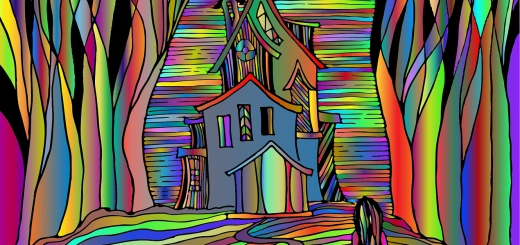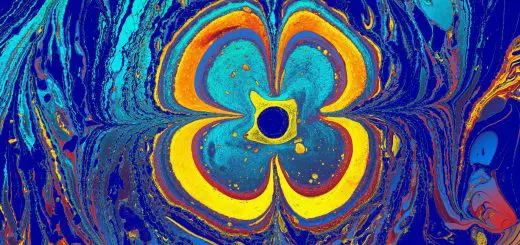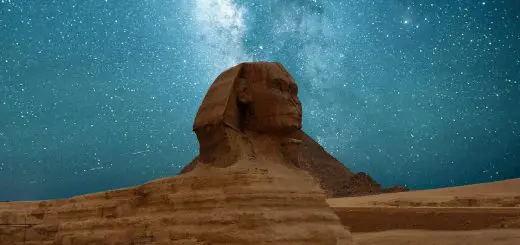Why Was the Berlin Wall Built and Torn Down?

Looking for more amazing products? Check out our online store and explore our collection here! Happy shopping!
Before diving in, please note: This post is for informational purposes only. If you’d like to know more about how we approach topics, feel free to check out our friendly Disclaimer Page.
Hey there, amazing readers! 
We’re committed to delivering quality posts, and your support (even just sticking around despite the ads) means everything to us. So, bear with us, and thanks for helping us keep the good vibes rolling. Now, on to the fun stuff!
TRANSLATE BUTTON AT THE END OF THE ARTICLE
A Quick Overview
The Berlin Wall, a towering symbol of division, stood for nearly three decades, shaping lives and politics across the globe.
Built in 1961, it embodied the stark contrast between Eastern and Western ideologies during the Cold War.
Its fall in 1989 marked a significant turning point not only for Germany but for the entire world.
So, why was the Berlin Wall built, and what led to its eventual dismantling?
Let’s take a deep dive into this fascinating chapter of history.
The Historical Context of Post-War Berlin’s Division
After World War II, Berlin was a city caught in the crossfire of political ideologies.
Germany was divided into four zones, controlled by the U.S., U.K., France, and the Soviet Union.
This division mirrored the ideological split between capitalism in the West and communism in the East.
By 1949, the zones had solidified into two separate nations: West Germany (Federal Republic of Germany) and East Germany (German Democratic Republic).
Life in Berlin became profoundly different depending on which side of the divide you found yourself.
West Berlin was a vibrant hub with a thriving economy and freedoms that East Berliners could only dream of.
Meanwhile, East Berlin was shaped by stringent regulations and economic stagnation.
As the years rolled on, discontent simmered in the East, leading many to seek refuge in the West.
The Rise of Tensions: East vs. West Germany
Tension continued to escalate in the early 1960s.
The mass exodus of East Germans to the West was alarming for the East German government.
In 1950, around 200,000 East Germans fled to the West each year, and this number surged during the early 1960s.
The brain drain posed a significant threat to the East’s economy and political stability.
The situation was so dire that by 1961, approximately one-sixth of the population had moved to West Berlin.
The East German government worried that this migration would undermine their regime.
Their response was to tighten restrictions on travel and freedom.
The people of East Berlin faced a growing sense of entrapment, and the well-meaning slogans of socialism began to feel hollow.
The Official Reasons Behind the Wall’s Construction
On August 13, 1961, the East German government launched a drastic measure: they constructed the Berlin Wall.
Officially, the government claimed it was a protective barrier, designed to stop Western "fascists" from entering East Germany.
They portrayed the Wall as a necessary action to safeguard the socialist state from Western influence and espionage.
However, the real motive was clear: control.
The Wall was a desperate attempt to halt the flood of defectors.
I remember reading accounts of East Germans who had to leave their homes overnight, their lives forever altered by an arbitrary line drawn in the sand.
The Wall was not just a physical barrier; it represented a profound psychological divide.
Life in East Berlin: Challenges and Restrictions
Living in East Berlin was a far cry from the freedoms enjoyed in the West.
The government imposed strict censorship, and dissent was met with harsh repercussions.
Families were often torn apart due to travel restrictions; children could not visit grandparents living just a few kilometers away.
Daily life was filled with shortages of basic goods, from food to clothing.
Imagine standing in line for hours for a loaf of bread, only to find that the store had run out.
This was the stark reality for many East Berliners.
The state-controlled economy faltered, and many citizens were left yearning for the opportunities that lay just beyond the Wall.
The Wall as a Symbol of Cold War Ideologies
The Berlin Wall became a potent symbol of the Cold War.
It was not just a barrier between two parts of the same city; it represented the broader ideological struggle between communism and capitalism.
Political leaders around the world used the Wall to illustrate the perceived failures of opposing systems and to rally support for their own causes.
On one side, you had the Western bloc, which celebrated freedom and individual rights.
On the other, the Eastern bloc touted collective ownership and social equality, though the reality often contradicted these ideals.
The Wall became a focal point for protests and discussions about human rights, echoing through streets worldwide.
The Impact of the Wall on Families and Communities
As I reflect on the emotional weight of the Wall, I can’t help but think of the countless families separated by it.
The emotional scars ran deep.
Stories of families torn apart were heartbreaking.
A father unable to see his children, a couple who had planned a future together now separated by concrete and barbed wire.
Community ties were frayed, and friendships faded as people found themselves on opposite sides.
Families had to choose between loyalty to the state or their loved ones.
Many felt trapped, unable to escape the oppressive atmosphere that surrounded them.
The Role of International Politics in the Wall’s Fate
Throughout the years, international politics played a crucial role in the Wall’s existence and eventual fall.
The United States, under leaders like JFK and Reagan, took a strong stance against communism.
Reagan’s famous challenge to tear down the Wall echoed the sentiments of many who wished for freedom.
In contrast, the Soviet Union’s grip on Eastern Europe weakened under Mikhail Gorbachev, who introduced policies like glasnost (openness) and perestroika (restructuring).
These changes encouraged dissidents in East Germany to voice their demands for reforms.
The international environment, coupled with domestic pressures, led to a slow but steady erosion of the Wall’s legitimacy.
Protests and Public Sentiment: Voices Against the Wall
By the late 1980s, discontent simmered to the surface.
East Germans took to the streets in peaceful protests, demanding more freedom and democratic reforms.
Demonstrations in cities like Leipzig drew thousands, showcasing the growing unity among citizens.
The government initially responded with repression, but the sheer determination of the people was undeniable.
As the protests intensified, the government struggled to maintain control.
The desire for change was palpable, and the sentiment for reform resonated throughout the nation.
The Significant Events Leading to the Wall’s Fall
The months leading up to the Wall’s fall were marked by a series of events that highlighted the cracks in the regime.
In September 1989, Hungary opened its border with Austria, allowing thousands of East Germans to flee.
This was a pivotal moment; it shattered the illusion of invincibility the East German government had maintained.
In October, large-scale protests erupted in East Berlin, with citizens demanding an end to the oppressive regime.
The pressure mounted, and government officials began to realize that maintaining the status quo was no longer viable.
The stage was set for a historic change.
Celebrating Freedom: The Day the Wall Came Down
Finally, on November 9, 1989, the unthinkable happened.
A government spokesperson mistakenly announced that East Germans could travel freely to the West.
The news spread like wildfire, and joyous East Berliners surged toward the Wall.
I remember watching the footage of people climbing the Wall, laughing, crying, and embracing one another.
The scene was a mix of disbelief and euphoria as they celebrated their newfound freedom.
The physical barrier that had divided families for decades was crumbling.
The Wall didn’t just fall; it shattered the chains of oppression that had held so many captive.
The Legacy of the Berlin Wall in Modern Europe
Today, the Berlin Wall stands as a powerful symbol of resilience and unity.
Its remnants serve as a reminder of the importance of freedom and the dangers of division.
The fall of the Wall paved the way for German reunification in 1990, transforming the political landscape of Europe.
Berlin has since emerged as a vibrant, multicultural city, embracing its diverse history.
The lessons of the Wall continue to resonate, reminding us of the significance of empathy, cooperation, and understanding.
Lessons Learned: Unity in Diversity and Peace Today
As we reflect on the history of the Berlin Wall, it’s crucial to recognize the lessons it imparts.
Division serves no one; our differences should be a source of strength rather than separation.
In today’s rapidly changing world, we must strive for understanding, compassion, and unity.
Let’s remember the courage of those who stood against the Wall.
Their collective voice echoed a timeless truth: freedom is worth fighting for.
As we move forward, may we cherish our shared humanity and embrace the beautiful tapestry of our diverse societies.
Conclusion
The Berlin Wall was more than just concrete and barbed wire; it was a profound representation of a divided world.
Its construction was born out of fear and control, while its fall symbolized hope, freedom, and unity.
As we continue to navigate the complexities of our modern world, let’s not forget the lessons learned from this significant period in history.
Together, we can build bridges instead of walls, fostering a spirit of collaboration and understanding.

The Enlightenment Journey is a remarkable collection of writings authored by a distinguished group of experts in the fields of spirituality, new age, and esoteric knowledge.
This anthology features a diverse assembly of well-experienced authors who bring their profound insights and credible perspectives to the forefront.
Each contributor possesses a wealth of knowledge and wisdom, making them authorities in their respective domains.
Together, they offer readers a transformative journey into the realms of spiritual growth, self-discovery, and esoteric enlightenment.
The Enlightenment Journey is a testament to the collective expertise of these luminaries, providing readers with a rich tapestry of ideas and information to illuminate their spiritual path.
Our Diverse Expertise
While our primary focus is on spirituality and esotericism, we are equally passionate about exploring a wide range of other topics and niches 

To ensure we provide the most accurate and valuable insights, we collaborate with trusted experts in their respective domains 
Our blog originally focused on spirituality and metaphysics, but we’ve since expanded to cover a wide range of niches. Don’t worry—we continue to publish a lot of articles on spirituality! Frequently visit our blog to explore our diverse content and stay tuned for more insightful reads.
Hey there, amazing reader! 
Check out our store here and take a peek at some of our featured products below! Thanks for being awesome!











